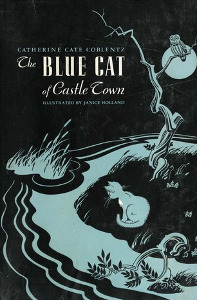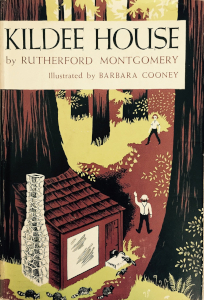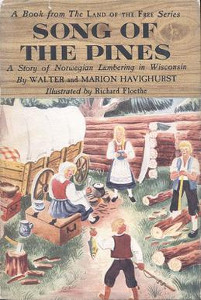< Newbery Medal and Honor Books
Given the Newbery Award's prestige it would be easy to assume that the award winners are all excellent books for children. The Biblioguides Team has not found this to be the case. We always want to provide parents with the information they need to make the best book decisions for their families. With that goal in mind, we've put together a complete list of all medal winners and honor books since inception, and the Biblioguides Review Team is working together to read our way through the winners and to provide a review. Where we have not yet reviewed a book, a description directly from the dust jacket or from the publisher has been provided. In some cases, we have shared a brief synopsis from The Newbery and Caldecott Awards: A Guide to the Medal and Honor Books (1999).
Reviews are the thoughts and opinions of the particular reviewer and do not necessarily represent all members of the team. Reviews will continue to be added as the team reads more of the Newbery books. We hope this list will help you familiarize yourself with the various winners and provide the necessary information to determine which books would be a good fit for your family!
The Door in the Wall
By: Marguerite de Angeli
Medal Winner
Reviewed by: Sherry Early
Recommended age: 10+
Also read and recommended by: Lara Lleverino, Sandy Hall, Sarah Kim, Terri Shown
The story takes place in fourteenth century England. Edward III is king. Robin, the son of one of the King's knights who is at war and of a lady mother who is in the Queen's service, is ten years old and "no longer a child to be looked after by womenfolk." His mother has left him to go to court, but he is in the capable hands of two trusted servants who are to hand him over to an escort who will take him to a neighboring castle where Robin will become a squire in training to be a knight like his father. However, Robin falls ill the day after his mother leaves, and he becomes unable to move his legs. Although Robin has lost his ability to walk and run, but he still has a "door" or doors of other abilities and gifts with which to make a good life. He learns to walk with crutches. He learns to work with wood. He exercises his muscles by swimming. And when the crisis comes in the story, it is Robin who is able to save the day and the castle and its inhabitants.
Read full reviewThe Blue Cat of Castle Town
By: Catherine Cate Coblentz
Illustrated by: Janice Holland
Honor
NOT REVIEWED
The people of Castleto'n, or Castle Town, Vermont, are justly proud of two of its early citizens. One was the carpenter who built there the most beautiful church pulpit in the state and the other was a girl who designed and fashioned a carpet so lovely that it now hangs in the Metropolitan Musuem of Art in the city of New York. On that carpet, among other designs, is pictured a most fascinating blue cat.
Why a blue cat? Ah, well—thereby hangs this tale; a tale of enchantment which some will call pure Americana, some folk lore, and some a tale of chivalry. For the blue cat is like a knight on a quest. His quest is to find a hearth to fit the song the river taught him and to teach the owner of the hearth to sing that song.
Many adventures befell the blue cat before he fulfilled his mission; many strange and interesting characters crossed his path. There were Ebenezer Southmayd the pewterer and John Gilroy the weaver; Arunah Hyde who wove the Dark Spell and Thomas Royal Dake the artist carpenter who made the pulpit. There was also the girl Zeruah Guernsey who fashioned the carpet. And, by no means to be forgotten, there was the Guernseys' barn cat, not a blue cat, to be sure, but a remarkable creature in her own right.
Trusting children and other rare people will accept this beautiful story on faith. For the skeptical there is proof enough—the enchanted town of Castleto'n itself, the pulpit and the carpet. And, its power no whit diminished by time, for any mortal who will listen with the heart as well as the ear, there is the Bright Enchantment and the river's song which the blue cat learned under a blue moon in a Vermont meadow more than a hundred years ago.
From the dust jacket
George Washington
By: Genevieve Foster
Honor
NOT REVIEWED
This story of Washington, simply told and charmingly illustrated, introduces him to children still too young to read the author's outstanding George Washington's World. It is not a rewrite of that book, but a completely new story, telling the events of Washington's life with interest and drama, omitting stories now known to lack authenticity.
It is based on the latest research available, and the illustrations give a complete picture of Washington's life at various periods. Children will delight in looking into Mt. Vernon, and viewing the grounds with the President and Nelly Custis.
From the dust jacket
Kildee House
By: Rutherford Montgomery
Illustrated by: Barbara Cooney
Honor
NOT REVIEWED
You might say this was a story of Jerome Kildee who built his home against a giant redwood tree, of Emmy Lou Eppy, who lived down the mountain and shared Jerome's housing problem, of Donald Roger and his dog Strong Heart, whose feud with Emmy Lou upset the tranquility of the redwoods.
But, really, this is the story of Old Grouch, the raccoon, who had refused to move out of his house in the redwood tree, of his bride who came to look and remained to stay, and the spotted skunks who set up housekeeping under Jerome's floor. It was the animals who were responsible for the housing problem and for the feud. While the feud flourished, so did the animals, and the story of how the housing problem in KILDEE HOUSE was settled to the satisfaction of everyone, including Old Grouch, is told in one of the most amusing and original animal stories in years.
Rutherford Montgomery, the author of KILDEE House, lives in the redwood country and knows the animals he writes about, and Barbara Cooney, the illustrator, has caught his sly humor in her pictures.
From the dust jacket
Song Of The Pines: A Story of Norwegian Lumbering in Wisconsin
By: Marion and Walter Havighurst
Illustrated by: Richard Floethe
Honor
NOT REVIEWED
Dedicated to the indomitable Norwegians who gave so generously to the development of our great Northwest, this is the fourth book published in THE LAND OF THE FREE series. Set in the rolling expanse of the Wisconsin woodlands, the spirit of the Scandinavian farmers who came to wrest a living from the unturned soil and the forest of a New World is typified in a personality of orphaned Nils Thorson, a wandering knife grinder.
In the lusty logging camps of the Northwest, young Nils, with rugged fortitude, sought to prove his worth to himself and his country. The story of how the young artisan joined in the mammoth task of turning Old World dreams into vigorous New World reality is painted in bold and stirring colors: a tribute to the courage and vision that tamed a wilderness to win a continent.
From the dust jacket
Tree of Freedom
By: Rebecca Caudill
Illustrated by: Dorothy Bayley Morse
Honor
NOT REVIEWED
When thirteen-year-old Stephanie made the long trek from Carolina to Kentucky in the spring of 1780, she brought with her an apple seed. Even so had her Grandmother Linney carried an apple seed from France to Charleston. The seed that Stephanie nurtured in the wild Kentucky soil, the "tree of freedom" as she called it, was not merely a link with the past, but a symbol of the new way of life that the pioneering families meant to build in the fresh green land.
Kentucky was full of promise in 1780 but it was also full of hardship. Before the winter set in, the seven Venables had to clear their land, raise a crop, and build a cabin. Tales of Indians in the neighborhood, demands for army volunteers, and the threats of a Britisher rivaling their claim did not do much to help. The Venables discovered that the Revolution had not been left behind in the East; the problem of belonging or not belonging to the new nation was even more important now that the authorization of the land office and the legality of their claim were in question.
More than just a story of homesteading, this is a warm and interesting study of character and family relationships. And the numerous line drawings by Mrs. Morse pleasingly round out the picture of the seven Venables.
From the dust jacket








